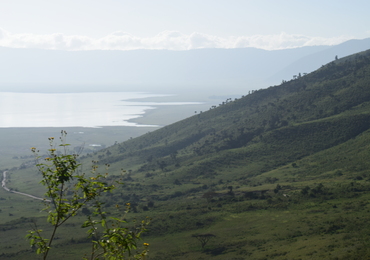Ngorongoro Crater is a truly awe-inspiring natural wonder located in northern Tanzania. This massive caldera is the result of a long-collapsed
volcano and measures over 19 miles in diameter, making it one of the largest unbroken caldera in the world. It is a UNESCO World Heritage site
and is home to an incredible array of wildlife, including the lion, elephant, buffalo and rhino.
As you approach the rim of the crater, you are greeted with a breathtaking view of the vast crater floor far below. The view alone is
worth the journey to this remote and wild place. The sides of the crater are steep and covered in dense vegetation, creating a stark contrast to
the open grasslands below.
Descending into the crater, you enter a unique and biologically diverse ecosystem that is home to over 25,000 large mammals and countless
birds, reptiles, and insects. It is a true wildlife haven and one of the few places in Africa where you can witness such an incredible concentration
of animals in one place.

As you explore the crater floor, you will see large herds of wildebeest and zebras grazing on the open plains, while predators such as lions, hyenas, and jackals stalk their prey. You may also have the chance to spot the rare and elusive black rhino, or catch a glimpse of elephants and buffalos moving through the bush.
But Ngorongoro Crater is not just a wildlife paradise. It is also a place of great cultural significance, as the Maasai people have lived in the area for centuries and continue to do so today. They have a deep connection to the land and a rich history that is intertwined with the wildlife that surrounds them.
| Destination | Ngorongoro Conservation Area |
|---|---|
| Park Size | 8,292 km2 |
| Distance from Arusha | 155 kilometers |
| Best time to visit | All year round |
